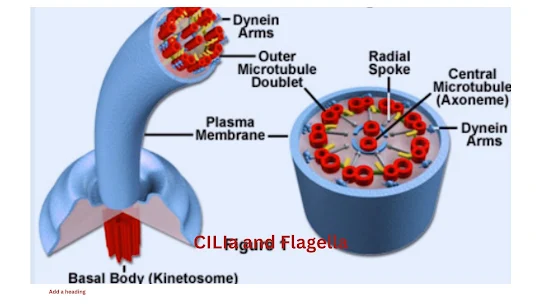Cilia and Flagella : A comparative analysis
Cilia and Flagella : A comparative analysis
Although they have similar structures, flagella and cilia are two different kinds of cell organelles that have different lengths and functions. Within each cell, there are hundreds of short and many cilia. Contrarily, there are fewer and longer flagella (often one to eight) per cell. Despite having the same structural makeup, motile cilia and eukaryotic flagella can have different beating patterns.
Cell exterior features called flagella and cilia mainly facilitate cell motility. Some cells have a huge number of short, hair-like projections called cilia covering their surface. Only one end of a cell contains the long, thread-like structures called flagella.
Unlike flagella, which beat separately, cilia beat in unison. Only eukaryotic cells contain cilia. Both prokaryotic and eukaryotic cells have flagella. Undulipodia organisms have both motile cilia and flagella. The primary function of cilia is to generate a thin layer of mucus along the breathing passages to avoid dust accumulation, while sperm cells employ flagella to drive themselves through the female reproductive organ.
Both flagella and cilia are motility organs. Microtubules linked to the plasma membrane and organized in a 9 + 2 arrangement comprise the core of cilia and flagella. The pattern's name comes from the fact that it is made up of two solitary microtubules encircled by a ring of nine microtubule paired sets, or doublets.
A microtubule bundle with a 9 + 2 configuration is called an axoneme. The structures known as basal bodies, which join the bases of cilia and flagella to the cell, are adapted centriole structures. Cilia and flagella move and bend as a result of the nine paired microtubule sets in the axoneme sliding against one another. The task of generating the force required for movement falls on the motor protein dynein. The majority of eukaryotic cilia and flagella have this kind of arrangement. Although they are structurally identical, flagella and cilia are different in length and function.





Comments
Post a Comment